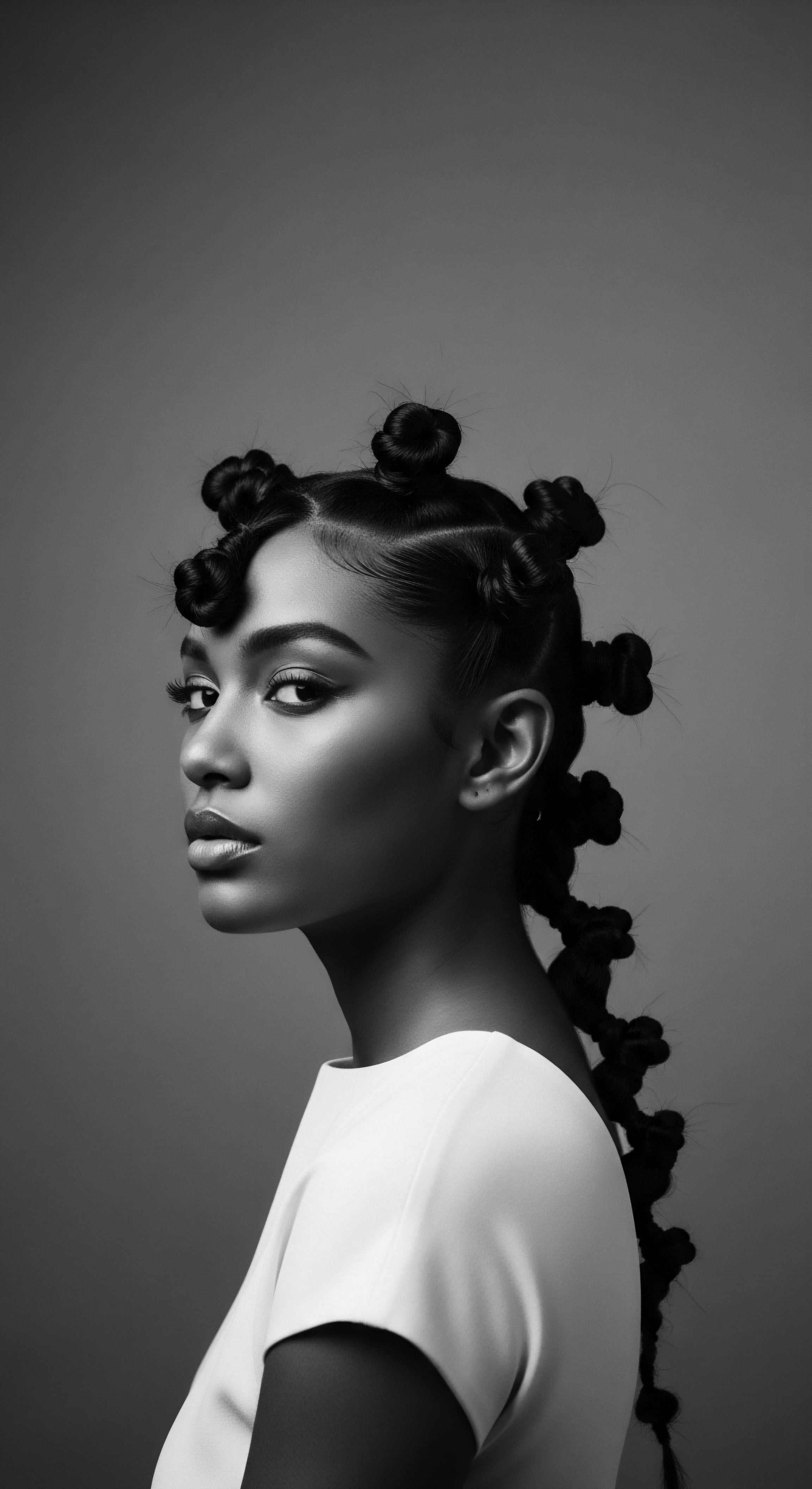
Fundamentals
The Natural Hair Journey represents a deeply personal and culturally resonant passage, a conscious decision by individuals, predominantly those of Black and mixed-race heritage, to cease chemically altering their hair’s inherent curl, coil, or wave patterns. This definition extends beyond a mere aesthetic preference; it signifies a reclamation of ancestral lineage, a return to elemental biology, and a profound acknowledgment of the hair’s organic disposition. The journey encompasses the processes of ceasing chemical treatments, growing out previously straightened or processed hair, and learning to care for one’s natural texture. This often involves a period of transition, where the hair grows in two distinct textures ❉ the chemically treated ends and the newly emerging natural roots.
This path is not a singular event but a continuous unfolding of self-discovery and connection to a broader historical narrative. It involves understanding the unique structural characteristics of textured hair, from its elliptical cross-section to the varying densities of its curl patterns, which inherently influence its care needs. The fundamental meaning of this passage lies in its deliberate choice to honor the hair’s original state, a choice that often carries echoes of historical resilience and self-determination within communities that have long faced pressures to conform to Eurocentric beauty standards. The Natural Hair Journey, at its very core, embodies a return to authenticity, a recognition of the beauty inherent in one’s genetic blueprint.
The Natural Hair Journey signifies a return to one’s intrinsic hair texture, a deeply personal and culturally significant act of self-acceptance.
For those embarking on this path, the initial phase often involves a significant learning curve. Individuals discover the distinct requirements of their natural strands, which can differ markedly from the care routines previously employed for chemically altered hair. This learning might include understanding the hair’s porosity, its moisture retention capabilities, and the specific methods required for detangling and styling.
The physical aspects of this change are intertwined with a mental adjustment, as individuals shed internalized perceptions of beauty that may have devalued their natural hair. This foundational understanding lays the groundwork for a more profound connection to one’s heritage, as traditional practices and ingredients often align with the needs of textured hair.
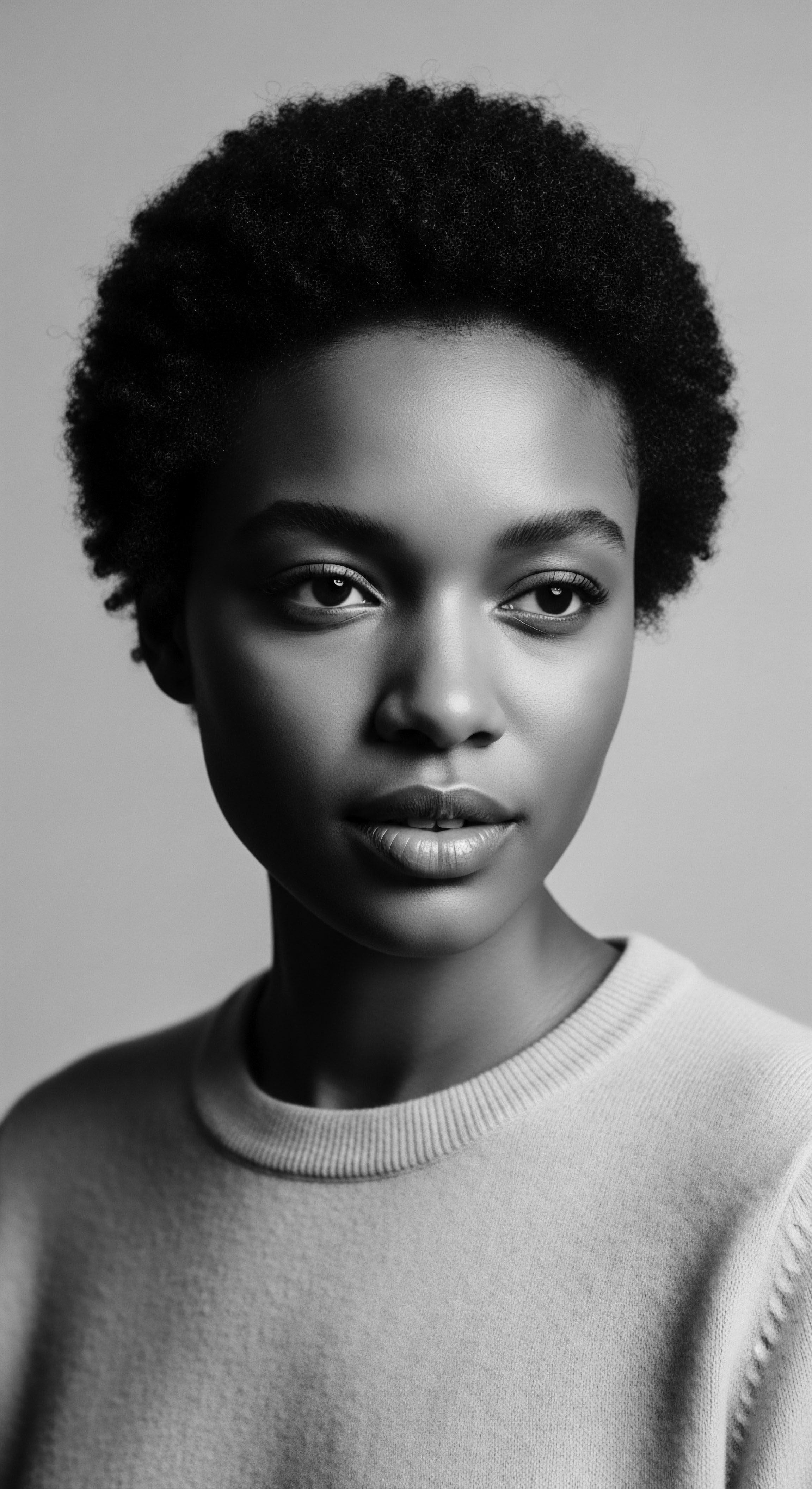
The Initial Unfurling ❉ Understanding the Shift
The commencement of a Natural Hair Journey often begins with a pivotal moment, a recognition of the dissonance between one’s authentic self and societal expectations for hair. This recognition frequently leads to the “big chop,” a decisive cut removing all chemically processed hair, or a gradual “transition,” allowing the natural texture to grow out over time. Each approach holds its own significance, reflecting individual temperament and circumstances. The choice itself is a statement, a declaration of intent to honor the hair’s innate structure.
During this initial unfurling, the hair’s biology becomes a central point of study. Textured hair, characterized by its coiled or kinky structure, possesses unique properties. The twists and turns along the hair shaft create points where moisture can escape more readily, rendering it prone to dryness.
This distinct architecture also makes it susceptible to breakage if not handled with gentleness. Learning about these biological realities becomes a form of ancestral wisdom, as many traditional hair care practices across the African diaspora were intuitively designed to address these very needs, long before modern science articulated the mechanisms.
The transition period, for many, is a period of dual textures, a physical manifestation of past and present. The straight, processed ends meet the springing, natural roots, creating a challenge in styling and care. This stage demands patience and experimentation, as individuals learn to blend these disparate textures, or to manage them separately.
The experience itself builds a deeper appreciation for the versatility and resilience of textured hair, laying the groundwork for a more intuitive understanding of its inherent beauty. It becomes a period of rediscovering what was always present, but perhaps overlooked or suppressed.
The cultural meaning of this shift cannot be overstated. For generations, external pressures often dictated hair practices, promoting alterations that distanced individuals from their natural textures. The decision to embark on a Natural Hair Journey is, therefore, an act of defiance, a reclaiming of agency over one’s own body and identity.
It is a quiet revolution, enacted strand by strand, asserting a heritage that values natural beauty above imposed standards. This foundational step is not merely about hair; it is about identity, self-worth, and a reconnection to a rich, enduring legacy.
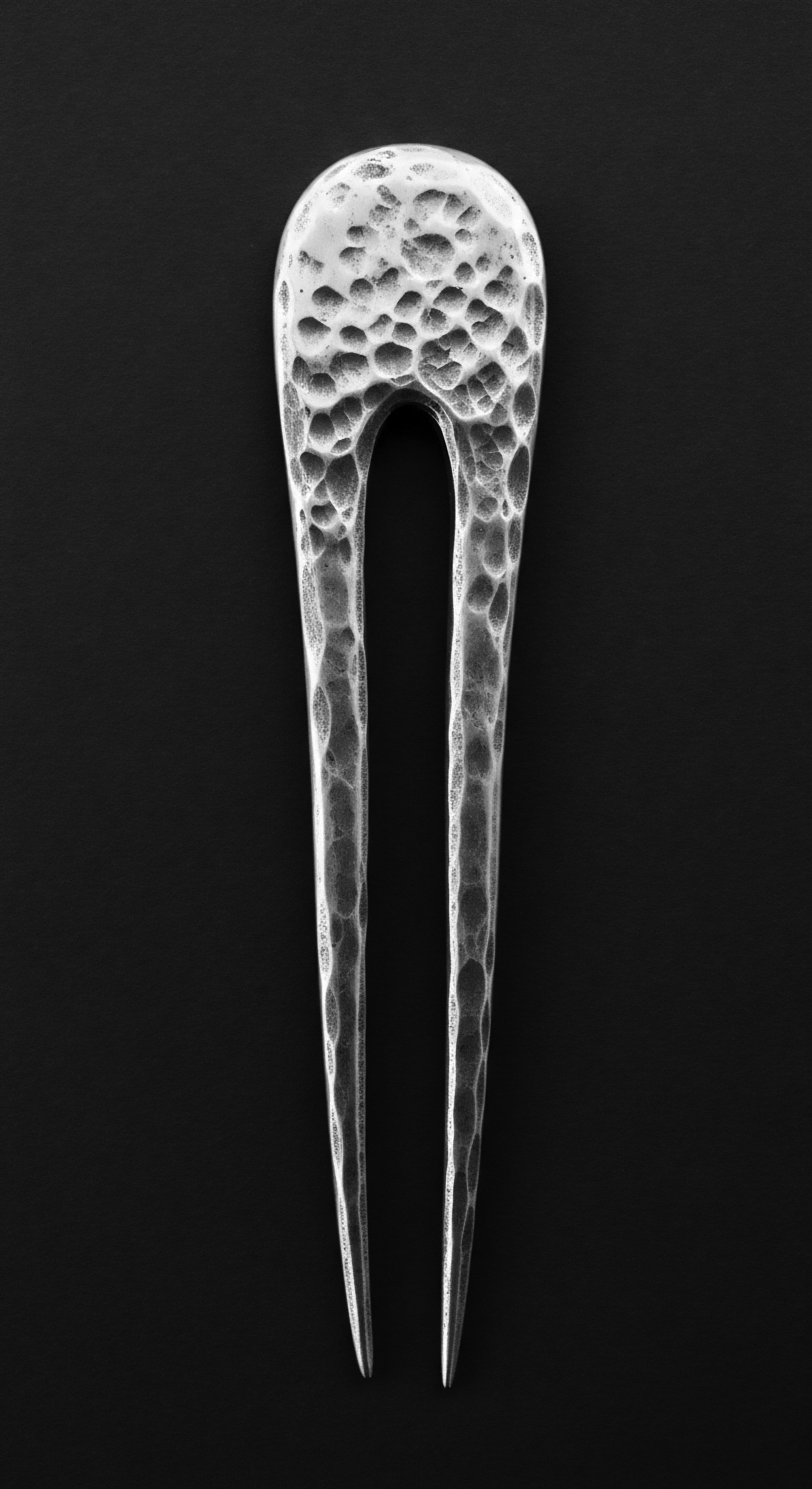
Intermediate
Moving beyond the initial steps, the Natural Hair Journey reveals itself as a profound cultural phenomenon, a dynamic interplay between individual identity and collective heritage. Its meaning expands to encompass the social, psychological, and historical dimensions that shape the experiences of individuals with textured hair. This passage is not simply about changing a hairstyle; it represents a conscious alignment with ancestral practices and a visible declaration of self-acceptance in a world that has often sought to standardize beauty according to narrow parameters. The significance of this path deepens as one uncovers the historical context that necessitated such a reclamation.
Historically, hair has served as a powerful marker of identity, status, and community across African societies. Prior to the transatlantic slave trade, elaborate hairstyles communicated tribal affiliation, age, marital status, and spiritual connections (Sieber & Herreman, 2000). The forced shaving of hair upon capture and enslavement aimed to strip individuals of these visual markers, severing a profound link to their cultural selves (Randle, 2015, p. 116).
This deliberate act of dehumanization underscored the power dynamics associated with hair. The Natural Hair Journey, in this light, becomes a symbolic undoing of centuries of imposed conformity, a re-establishment of a connection to a heritage that was systematically suppressed. The delineation of this path involves acknowledging the long shadow of colonial beauty standards and the enduring impact of their influence on textured hair care.
The Natural Hair Journey transcends mere aesthetics, acting as a powerful reclamation of ancestral identity and a visible challenge to imposed beauty norms.
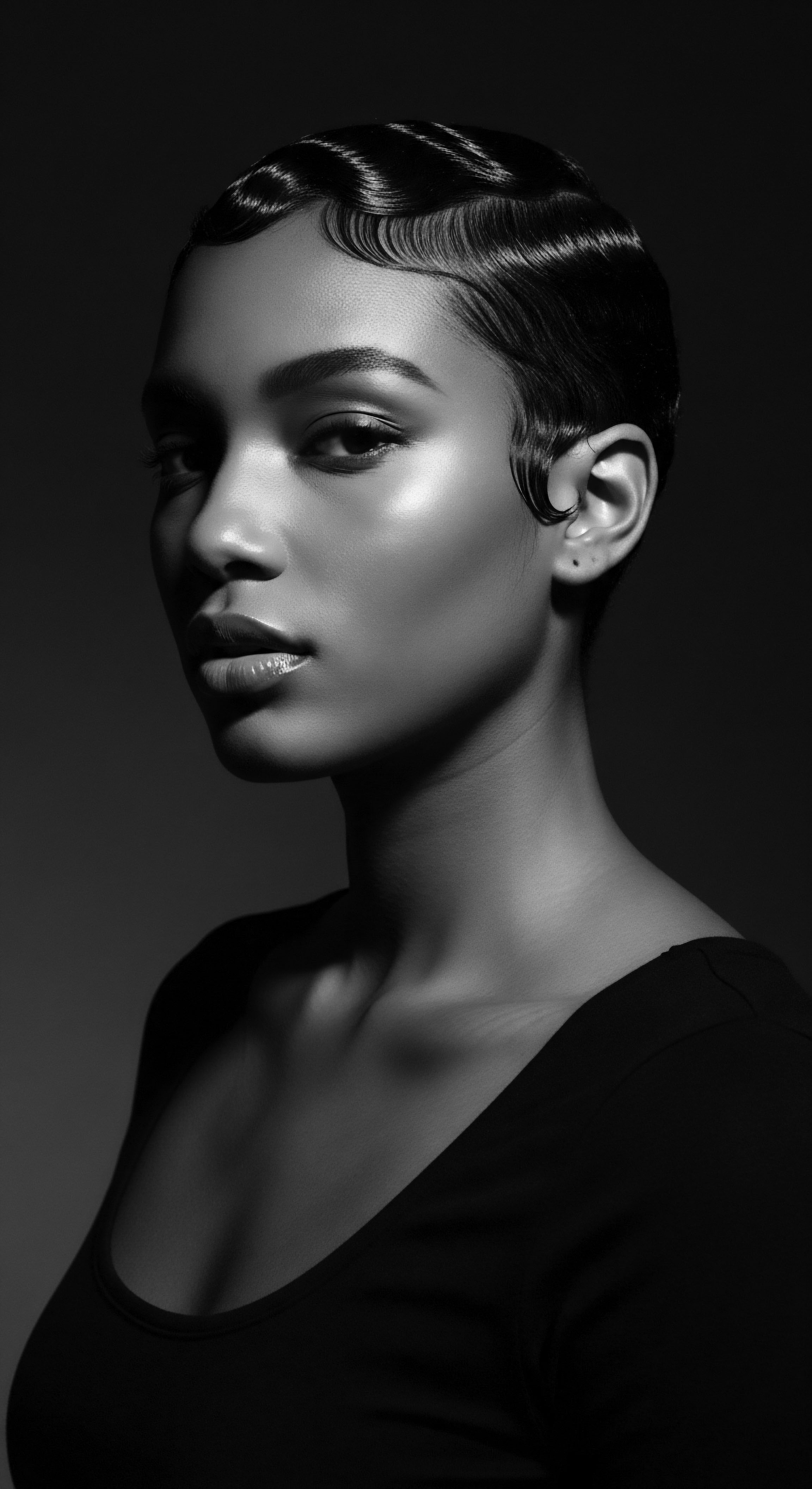
Echoes from the Source ❉ Ancestral Wisdom in Modern Care
The deep roots of the Natural Hair Journey extend into the rich tapestry of ancestral hair care practices. Ancient African civilizations utilized a wealth of natural ingredients and sophisticated techniques to maintain the health and vitality of textured hair. These methods were not merely cosmetic; they were integrated into daily life, reflecting communal values, spiritual beliefs, and a profound understanding of the natural world.
The continuity of these practices, even through eras of oppression, speaks to their inherent efficacy and cultural resilience. Modern natural hair care, in many ways, reinterprets and revitalizes this inherited wisdom.
For instance, the use of various plant-based oils, butters, and herbs for moisture retention, scalp health, and hair strength was widespread. Shea butter, for example, derived from the nuts of the African shea tree (Vitellaria paradoxa), has been a staple for centuries, valued for its emollient properties that seal moisture into hair strands. Similarly, various botanical infusions and pastes were applied to promote growth and address scalp conditions.
These traditional remedies, often passed down through generations, demonstrate an intuitive understanding of hair biology, even without modern scientific terminology. The exploration of these historical practices reveals a profound ecological literacy and a deep respect for the gifts of the earth.
The contemporary Natural Hair Journey often involves a deliberate return to these ingredients, seeking out products that prioritize natural components and minimize harsh chemicals. This re-engagement with ancestral wisdom is not simply a trend; it is a conscious decision to align care practices with the hair’s inherent needs, mirroring the holistic approach of forebears. The understanding of the hair’s unique structure, prone to dryness and breakage, finds its historical counterpoint in practices designed for deep conditioning and gentle handling. This historical perspective provides a powerful framework for current care regimens, linking present choices to a continuous lineage of knowledge.
The significance of this historical connection is not lost on those who undertake this journey. It becomes a tangible link to the past, a way of honoring the ingenuity and resilience of ancestors who preserved these practices despite immense adversity. The simple act of oiling one’s hair with shea butter or detangling with care becomes a ritual steeped in generations of communal knowledge. This deep understanding transforms routine care into a meaningful act of cultural preservation, reinforcing the enduring value of textured hair heritage.
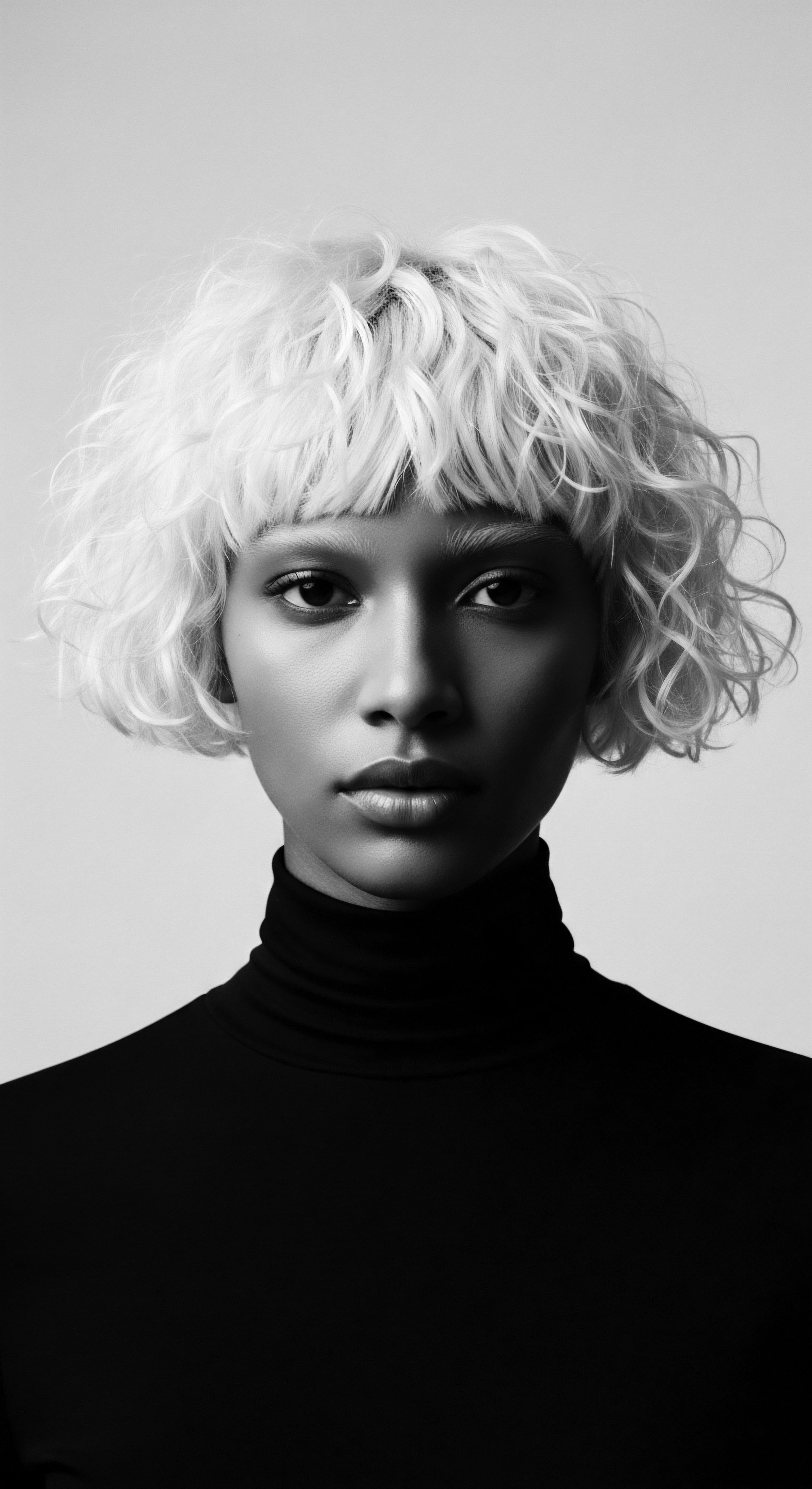
The Tender Thread ❉ Community and Shared Experience
Beyond individual practice, the Natural Hair Journey fosters a vibrant sense of community. This collective experience creates spaces for shared learning, mutual support, and the celebration of diverse textured hair expressions. Forums, social media groups, and local meet-ups serve as modern-day communal gatherings, echoing the historical importance of shared grooming rituals in African societies. In these spaces, individuals exchange tips, product recommendations, and personal stories, navigating the complexities of their hair’s specific needs and the broader societal perceptions surrounding natural hair.
This communal aspect provides a powerful antidote to the isolation that can arise from societal pressures to conform. Many individuals recount experiences of negative commentary or discrimination regarding their natural hair, both in personal and professional settings (Maharaj, 2025). The shared understanding within the natural hair community offers validation, affirmation, and a sense of belonging.
It reinforces the idea that natural hair is not only acceptable but beautiful, professional, and a source of pride. This collective empowerment is a crucial element of the journey’s broader meaning.
The shared knowledge within these communities extends to practical applications, from understanding different curl patterns (e.g. 3A, 4C) to mastering protective styles that minimize manipulation and promote growth. The exchange of information often bridges the gap between traditional wisdom and modern scientific understanding, as individuals seek to optimize their care routines. This collaborative spirit transforms the personal journey into a collective movement, continually redefining and expanding the understanding of textured hair care.
The significance of this communal support is particularly evident in overcoming internalized biases. For generations, the message that straight hair was “good” and natural hair was “bad” permeated many communities of color (Byrd & Tharps, 2014). The Natural Hair Journey challenges these deeply ingrained perceptions, and the community plays a vital role in dismantling them.
Through shared narratives of self-acceptance and cultural pride, individuals find the courage to embrace their authentic selves, knowing they are part of a larger, supportive network. This collective endeavor reinforces the idea that the beauty of textured hair is multifaceted and worthy of celebration.
| Traditional Practice/Ingredient Shea Butter (Vitellaria paradoxa) |
| Ancestral Context Used across West Africa for moisturizing skin and hair, protecting from sun and harsh elements. |
| Modern Application/Benefit A rich emollient in conditioners and stylers, providing deep moisture and sealing cuticles. |
| Traditional Practice/Ingredient Herbal Infusions (e.g. Rosemary, Fenugreek) |
| Ancestral Context Used for scalp treatments, promoting growth, and addressing various hair concerns. |
| Modern Application/Benefit Found in scalp tonics and rinses for stimulating circulation and strengthening hair follicles. |
| Traditional Practice/Ingredient Protective Styling (Braids, Twists) |
| Ancestral Context Served as social markers, ceremonial adornments, and practical ways to manage hair for long periods. |
| Modern Application/Benefit Minimizes manipulation, retains length, and protects hair from environmental stressors. |
| Traditional Practice/Ingredient Clay Washes (e.g. Bentonite, Rhassoul) |
| Ancestral Context Utilized for cleansing the hair and scalp, drawing out impurities. |
| Modern Application/Benefit Gentle cleansers that clarify without stripping natural oils, maintaining moisture balance. |
| Traditional Practice/Ingredient These enduring practices demonstrate a continuous legacy of care for textured hair, connecting past wisdom with present needs. |
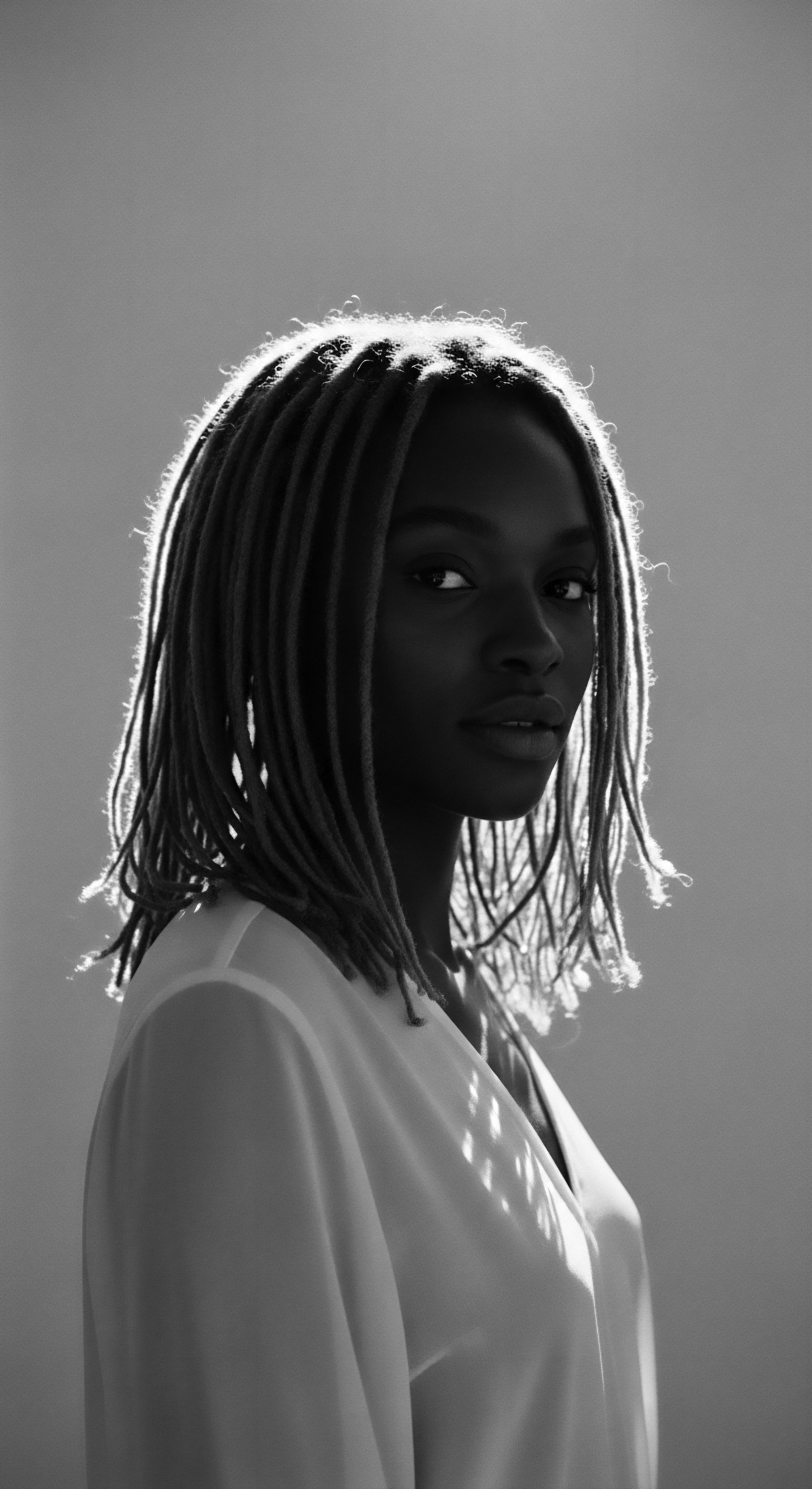
Academic
The Natural Hair Journey, from an academic perspective, represents a complex sociocultural phenomenon, a critical site where historical power dynamics, racial identity formation, and the politics of appearance intersect. Its meaning extends beyond individual choice, serving as a lens through which to examine the enduring legacy of colonialism, racial subjugation, and resistance within diasporic communities. This conceptualization necessitates an interdisciplinary approach, drawing insights from anthropology, sociology, psychology, and ethnobotany to fully comprehend its profound implications.
The elucidation of this journey involves dissecting the historical weaponization of hair as a tool of control and the subsequent reclamation of its inherent beauty as an act of defiance. The delineation of this phenomenon reveals not merely a trend, but a sustained cultural movement with significant long-term consequences for individual well-being and collective liberation.
The sociological underpinnings of the Natural Hair Journey are particularly salient. Societal beauty standards, often rooted in Eurocentric ideals, have historically marginalized textured hair, associating it with notions of “unprofessionalism,” “messiness,” or even “ugliness” (Ellington, 2023). This systemic devaluation has exerted immense pressure on individuals of African descent to chemically straighten their hair, a practice that, while offering a semblance of conformity, often carries physical and psychological costs (Maharaj, 2025). The Natural Hair Journey, in this context, signifies a conscious rejection of these oppressive norms, a counter-hegemonic movement asserting self-definition and cultural pride.
It challenges the very structures that seek to regulate Black bodies and expressions of identity. The implications of this rejection are far-reaching, influencing perceptions of professionalism, self-esteem, and racial identity development within and outside Black communities.
Academically, the Natural Hair Journey stands as a critical socio-cultural phenomenon, illuminating the intricate interplay of historical power, racial identity, and aesthetic resistance.
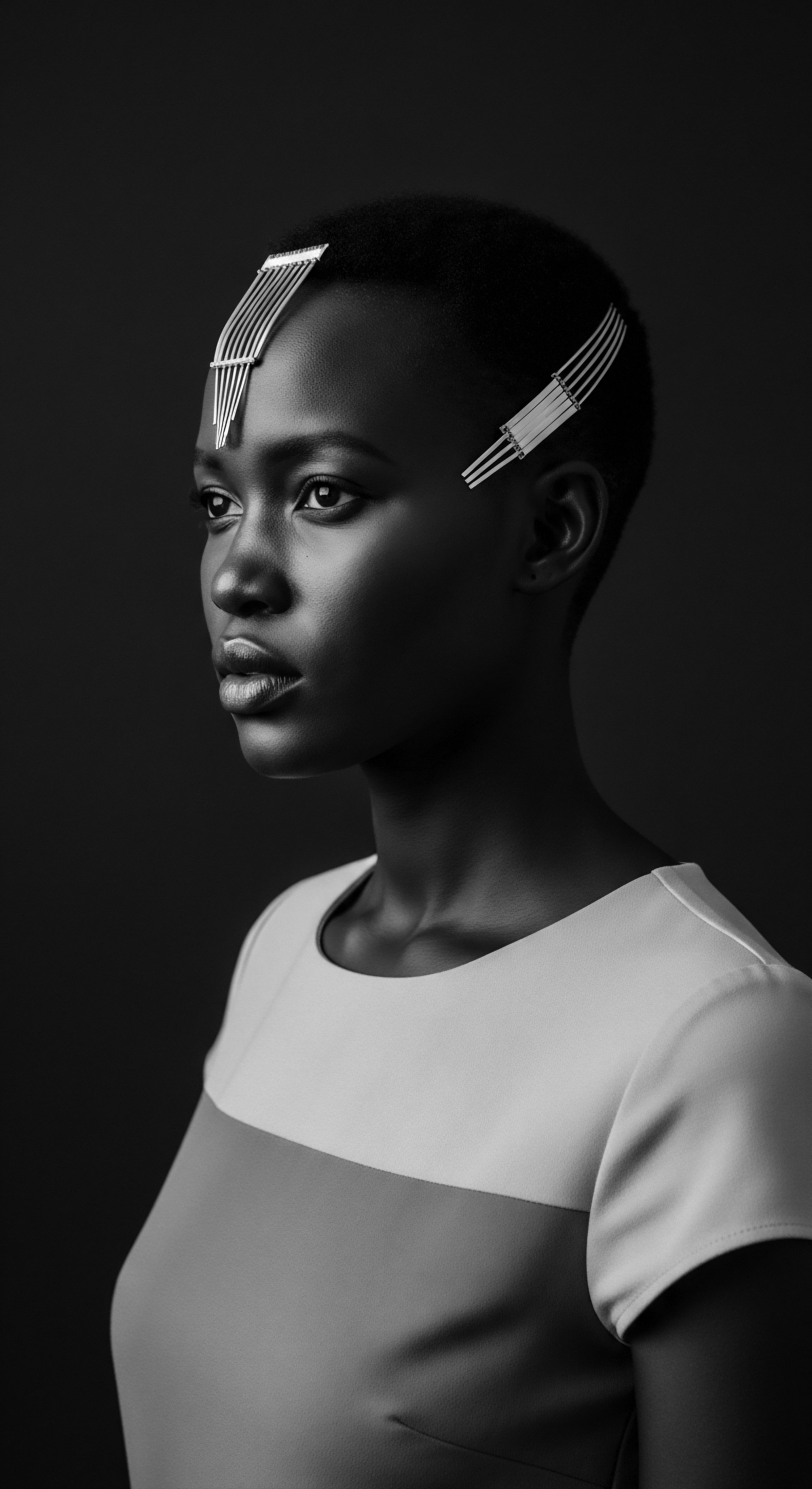
The Unbound Helix ❉ Hair as a Site of Resistance and Self-Definition
The history of textured hair, particularly for Black women, is inextricably linked to narratives of resistance against oppressive systems. One compelling historical example that powerfully illuminates the Natural Hair Journey’s connection to textured hair heritage and Black hair experiences is the implementation of the Tignon Laws in 18th-century Louisiana. Enacted in 1786 by Spanish colonial Governor Esteban Rodriguez Miró, these sumptuary laws mandated that Creole women of color, both free and enslaved, cover their hair with a headwrap, or “tignon” (Wesleyan College, 2021).
The intent was clear ❉ to visually distinguish these women from white women, assert their racial inferiority, and suppress their perceived social and economic advancement, particularly their ability to attract white male admirers (Gould, cited in Tignon Laws & Black Women’s Creative Resistance, 2024). This legislation aimed to strip away a visible marker of their identity and beauty, forcing them into a prescribed aesthetic of servitude or lower status.
However, the response of Black women to these laws was a testament to their enduring spirit and creativity. Instead of succumbing to the intended degradation, they transformed the tignon into a vibrant symbol of defiance and cultural heritage. They crafted elaborate, colorful, and ornate headwraps, adorned with jewels and intricate folds, turning an instrument of oppression into a statement of fabulousness and personal expression (Op-ed ❉ To police Black hair is to police Black existence, 2021). This act of sartorial rebellion demonstrated a profound psychological resilience, reclaiming agency over their appearance and identity despite legislative attempts to control them.
The tignon, originally meant to humble, became a powerful visual assertion of pride and an enduring emblem of resistance, signifying a continuous thread of self-definition through hair that predates and informs the contemporary Natural Hair Journey (Wesleyan College, 2021). This historical incident serves as a poignant reminder that the policing of Black hair is not new; neither is the ingenuity of Black women in resisting such control.
This historical precedent underscores the deeper meaning of the Natural Hair Journey today. It is not merely a personal choice; it is a continuation of a centuries-long struggle for autonomy over one’s body and cultural expression. The contemporary movement echoes the spirit of those who defied the Tignon Laws, asserting that textured hair, in its natural state, is inherently beautiful and worthy of public display. This assertion challenges the implicit and explicit biases that still persist in workplaces, schools, and media, where Eurocentric beauty standards often remain the norm (Maharaj, 2025).
The journey, therefore, contributes to a broader decolonization of beauty, dismantling the psychological frameworks that have historically devalued Black hair. The act of wearing natural hair becomes a political statement, a cultural affirmation, and a deeply personal declaration of freedom.
The psychological implications of this journey are extensive. Research suggests that for Black women, hair is inextricably linked to identity and self-esteem (Johnson & Bankhead, 2014). The pressure to conform to straightened hair norms can lead to negative self-perception and internalized racism (Maharaj, 2025). Conversely, embracing natural hair has been correlated with increased self-concept and positive racial identity (Johnson & Bankhead, 2014).
This transition can be a process of self-discovery, leading to a greater sense of pride and strength (White, 2005, cited in The Politics of Black Womens’ Hair, 2013). The long-term consequences of this shift include not only improved individual mental well-being but also a collective strengthening of cultural identity and resilience within Black and mixed-race communities. The Natural Hair Journey, viewed through this academic lens, is a dynamic force for social change, reshaping perceptions of beauty and belonging.
The academic examination of the Natural Hair Journey also delves into the scientific understanding of textured hair, often validating long-standing ancestral practices. The unique morphology of coiled and kinky hair, characterized by its elliptical cross-section and numerous twists, contributes to its fragility and tendency towards dryness (Historical Perspectives on Hair Care, 2025). This inherent structure explains why traditional African hair care emphasized moisture retention through rich butters and oils, and protective styling to minimize manipulation and breakage. Modern trichology and cosmetic science now offer detailed explanations for these observations, bridging ancient wisdom with contemporary understanding.
For instance, the practice of “co-washing” (conditioner-only washing) in the natural hair community mirrors the historical use of non-stripping cleansing agents, recognizing the need to preserve the hair’s natural lipids. The scientific backing for these practices reinforces the validity and efficacy of traditional knowledge systems.
Furthermore, the ethnobotanical research on African plants used for hair care provides empirical support for the ancestral emphasis on natural ingredients. Studies have identified numerous plant species traditionally used for hair growth, scalp health, and conditioning (Cosmetopoeia of African Plants, 2024). For example, the fruit of Citrullus lanatus (Kalahari Desert Melon) is used in South Africa for natural hair care products, and various other plants are noted for their potential as antidiabetic treatments, which has been linked to hair health (Cosmetopoeia of African Plants, 2024).
This connection between traditional plant use and modern scientific inquiry highlights the depth of ancestral knowledge and its continued relevance. The integration of these scientific findings into the narrative of the Natural Hair Journey provides a comprehensive understanding, demonstrating that the wisdom of the past is not merely anecdotal but often grounded in observable biological principles.
The intersection of these academic disciplines reveals the Natural Hair Journey as a multifaceted phenomenon. It is a historical response to oppression, a psychological act of self-affirmation, a sociological movement challenging dominant beauty standards, and a scientific exploration of hair biology. The success insights derived from this journey indicate a powerful shift in cultural consciousness, where individuals are increasingly prioritizing authenticity and ancestral connection over conformity. This evolution suggests a future where textured hair is not only accepted but celebrated in all its diverse forms, recognizing its profound historical, cultural, and personal meaning.
- Historical Oppression ❉ The Tignon Laws of 1786 in Louisiana exemplify legislative attempts to control and demean Black women through their hair, mandating head coverings to signify lower social status.
- Cultural Resistance ❉ Black women transformed the mandated tignon into elaborate, expressive headwraps, turning a tool of oppression into a symbol of defiance and cultural pride.
- Psychological Liberation ❉ Embracing natural hair can lead to increased self-esteem and a positive racial identity, countering the negative self-perception often induced by Eurocentric beauty standards.
- Ancestral Validation ❉ Modern hair science often validates traditional African hair care practices, confirming the efficacy of natural ingredients and gentle handling for textured hair’s unique structure.
| Historical Period/Context Pre-Colonial Africa |
| Dominant Societal Norm/Pressure Hair as marker of identity, status, spirituality. |
| Impact on Black Hair Practices Elaborate, diverse styling; natural textures celebrated and maintained with traditional ingredients. |
| Historical Period/Context Slavery & Colonialism |
| Dominant Societal Norm/Pressure Dehumanization, imposition of Eurocentric ideals. |
| Impact on Black Hair Practices Forced hair shaving, limited grooming, emergence of caste systems based on hair texture, pressure to straighten. |
| Historical Period/Context Early 20th Century (Post-Slavery) |
| Dominant Societal Norm/Pressure Assimilationist pressures, rise of hair straightening products. |
| Impact on Black Hair Practices Widespread use of hot combs and chemical relaxers to achieve "acceptable" straight styles. |
| Historical Period/Context Civil Rights/Black Power Movement (1960s-70s) |
| Dominant Societal Norm/Pressure "Black is Beautiful" ethos, racial pride. |
| Impact on Black Hair Practices Resurgence of natural styles like the Afro as symbols of defiance and cultural connection. |
| Historical Period/Context Contemporary Era (2000s-Present) |
| Dominant Societal Norm/Pressure Continued discrimination, but growing natural hair movement. |
| Impact on Black Hair Practices Increased embrace of natural textures, advocacy for anti-discrimination laws (e.g. CROWN Act), diverse product market. |
| Historical Period/Context The trajectory of Black hair practices reveals a continuous negotiation between external pressures and internal cultural affirmation, with the Natural Hair Journey serving as a powerful contemporary expression of this enduring legacy. |
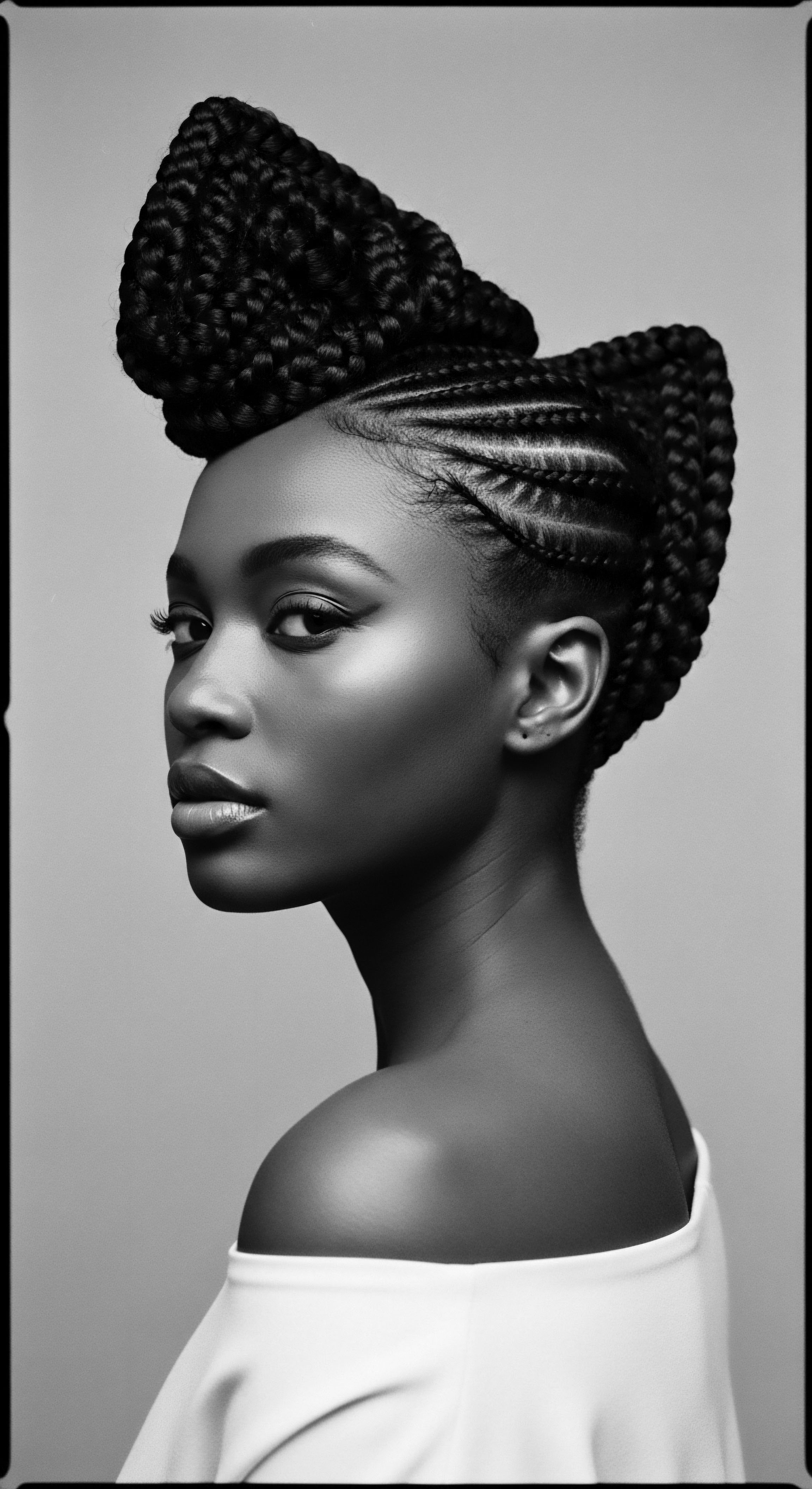
Reflection on the Heritage of Natural Hair Journey
The Natural Hair Journey, in its deepest sense, represents a profound meditation on Textured Hair, its Heritage, and its Care. It is a living, breathing archive, continually written by each individual who chooses to walk this path. The narrative unfolds not as a fleeting trend, but as a timeless resurgence, connecting present-day choices to ancient echoes from the source.
The wisdom embedded in ancestral practices, once obscured by colonial impositions, now shines brightly, guiding a tender thread of care that spans generations and continents. This collective awakening allows individuals to voice their identity, shaping futures where the unbound helix of textured hair is celebrated in its full, unadulterated splendor.
The significance of this journey lies in its capacity to heal historical wounds, transforming past subjugation into present triumph. Every curl, coil, and kink becomes a testament to resilience, a symbol of beauty that defies narrow definitions. The shared experiences within the natural hair community forge bonds that reinforce cultural continuity, ensuring that the legacy of textured hair is preserved and honored.
This is more than a personal aesthetic; it is a collective affirmation, a powerful declaration of self-worth that resonates through the ages. The Natural Hair Journey, therefore, is an ongoing act of love—for oneself, for one’s ancestors, and for the generations yet to come, who will inherit this rich, celebrated heritage.
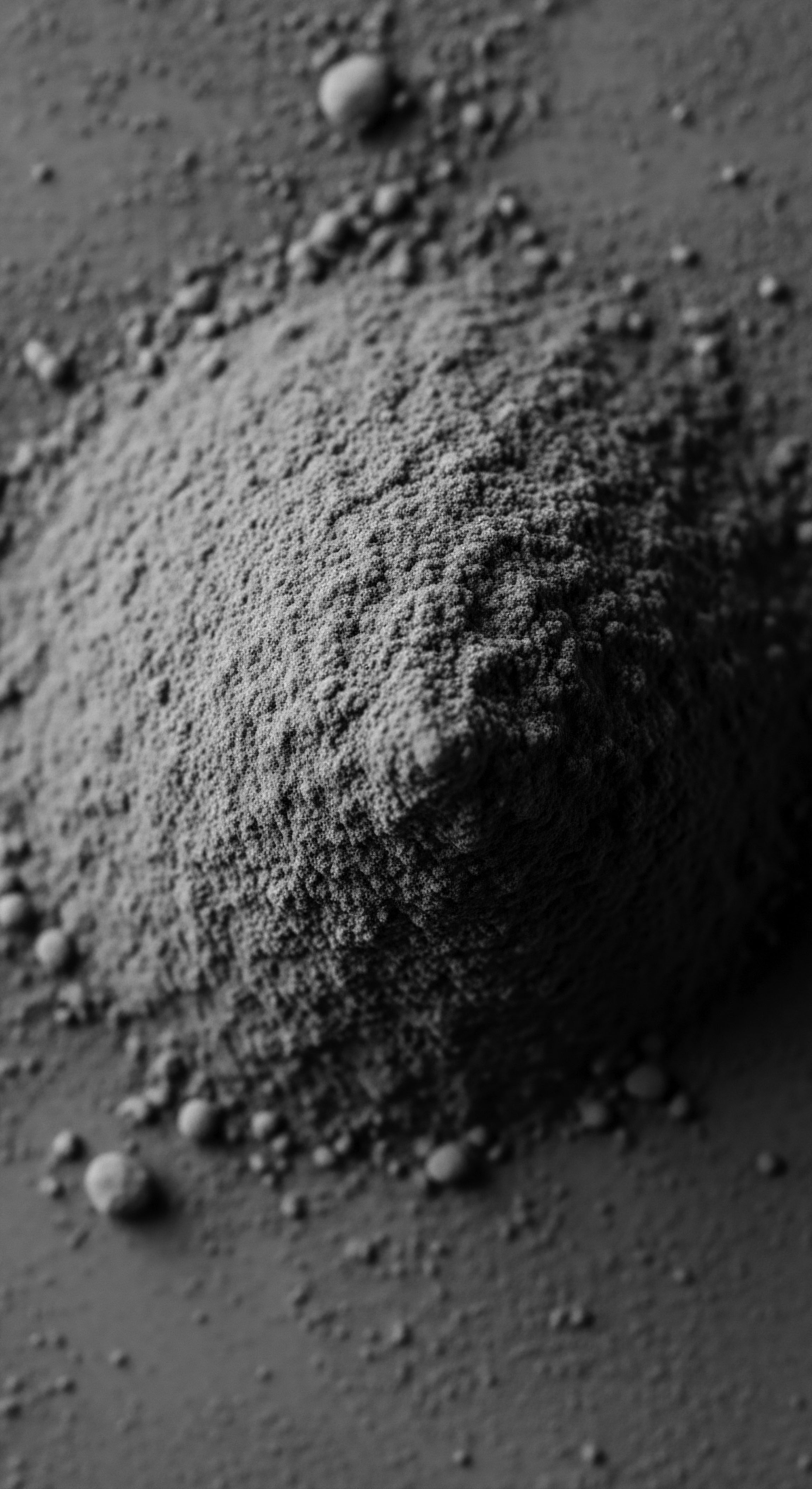
References
- Byrd, A. D. & Tharps, L. D. (2014). Hair Story ❉ Untangling the Roots of Black Hair in America. St. Martin’s Press.
- Ellington, T. N. (2023). Black Hair in a White World. Kent State University Press.
- Greensword, S. N. (2022). Historicizing black hair politics ❉ A framework for contextualizing race politics. Sociology Compass, 16(12), e13015.
- Johnson, T. A. & Bankhead, T. (2014). Hair It Is ❉ Examining the Experiences of Black Women with Natural Hair. Open Journal of Social Sciences, 2(10), 86-100.
- Maharaj, C. (2025). Beyond the roots ❉ exploring the link between black hair and mental health. Mental Health Awareness Week 2025 Blog .
- Mbilishaka, A. (2018). PsychoHairapy ❉ Brushing Up on the History and Psychology of Black Hair. Psi Chi Journal of Psychological Research, 23(4), 274-282.
- Mutiti, N. (2017). The Algorithmic Logics of Hair Braiding. Recess Art .
- Nyela, O. (2021). Braided Archives ❉ Black hair as a site of diasporic transindividuation. York University.
- Opie, T. & Phillips, S. (2015). Black Women’s Hair ❉ The Politics of Hair and Identity. Journal of Black Studies, 46(1), 1-18.
- Sieber, R. & Herreman, F. (2000). Hair in African Art and Culture. Museum for African Art.
- White-Jolivette, T. (2025). African American Women’s Experience of Wearing Natural Textured Hair. Walden University.
